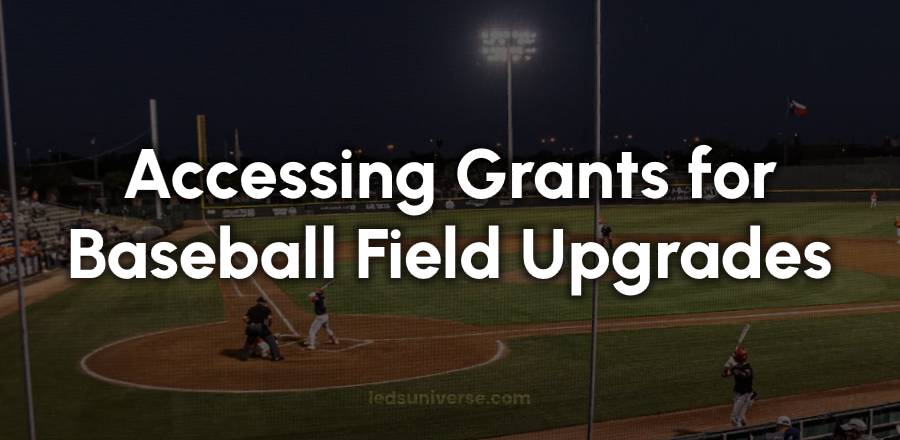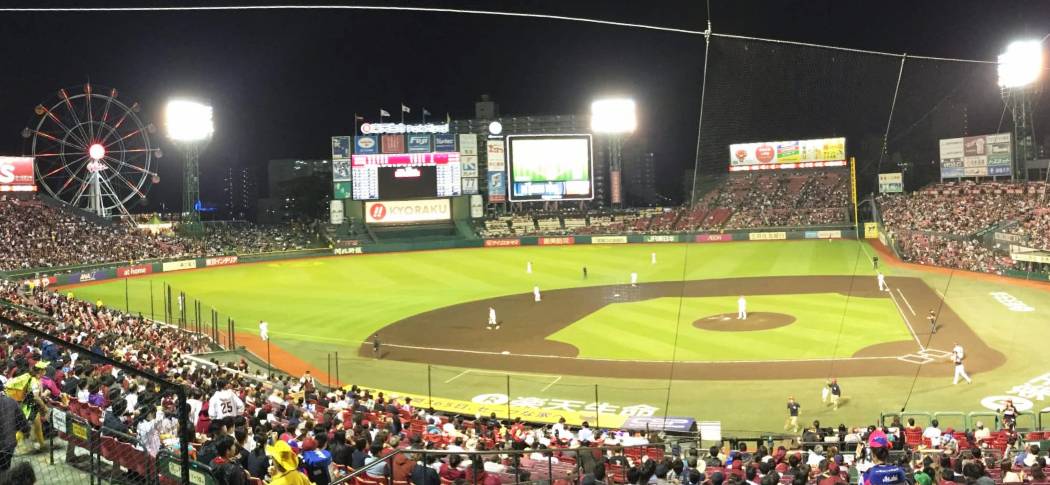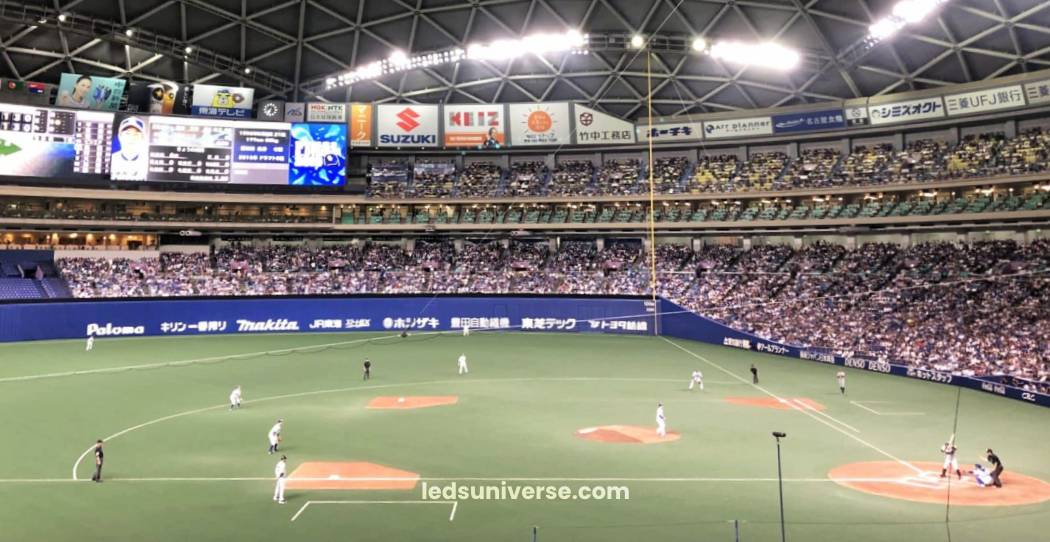
As dusk settles, the fun often comes to a halt, limiting playtime and curtailing the spirit of competition. Fortunately, numerous grants are available to help organizations upgrade their baseball field lighting, creating vibrant spaces for kids and families to come together. These grants provide an opportunity for communities to invest in their youth, fostering engagement and encouraging a healthier lifestyle.
Many fields struggle with inadequate lighting, limiting their usability and safety during evening games. Upgrading lighting systems can transform a baseball field into a vibrant community hub, attracting players and spectators alike. To support these improvements, various grants are available, offering financial assistance to enhance lighting systems and foster better playing conditions.
Reach out for free lighting consultation
Table of Contents
ToggleWhen seeking funding for baseball field lighting, numerous options exist. Understanding the landscape of available grants helps organizations identify the best fit for their needs. These grants can be classified into several categories, including federal, state and local, and private and nonprofit sources.

| Category | Description | Examples/Funding Amounts |
|---|---|---|
| Federal Grants | Funding from government agencies aimed at community development and sports facilities. | National Park Service: ~$150 million (2021) for LWCF projects. |
| Community Development Block Grant (CDBG) | Managed by the U.S. Department of Housing and Urban Development for community infrastructure improvements. | $3 billion distributed (2023) for recreational facility enhancements. |
| State and Local Grants | Specific funding opportunities from state governments for local community enhancements. | California Proposition 68: $254 million for outdoor projects. |
| Local Municipality Programs | Grants established by local municipalities, often with fewer applicants, increasing funding chances. | Cities like Denver and San Diego: $1 million to $5 million annually. |
| Private and Nonprofit Grants | Grants from private organizations and nonprofits focused on youth sports and community development. | Coca-Cola Foundation: $10 million for healthy lifestyle projects. |
| Corporate Sponsorships | Partnerships with local businesses for funding or in-kind contributions to support field improvements. | Local business contributions, e.g., $5,000 for lighting fixtures. |
Federal grants provide funding opportunities from government agencies aimed at promoting community development and sports facilities. In 2021, the National Park Service allocated approximately $150 million through the Land and Water Conservation Fund (LWCF) for outdoor recreation projects. This fund offers grants to local governments for outdoor recreational projects, including lighting improvements for baseball fields. With thousands of baseball fields across the country, securing a portion of this funding can significantly impact local sports facilities.
The Community Development Block Grant (CDBG) program, managed by the U.S. Department of Housing and Urban Development, is another avenue for funding. In 2023, the CDBG program distributed over $3 billion to communities nationwide. These grants are designed to improve community infrastructure, including recreational facilities. Local governments can apply for these grants to fund lighting upgrades as part of broader community development initiatives.
Many states offer specific funding opportunities tailored to local communities. For example, California’s Office of Grants and Local Services administers the California State Parks’ Proposition 68, which allocates $254 million for outdoor recreation projects. These grants may come from state departments of recreation, education, or local government agencies. Each state has its own grant programs, often aimed at enhancing public facilities, including sports fields. Many of these grants require a clear demonstration of how the funds will benefit the community, such as increasing accessibility, safety, or overall engagement in sports.
Local municipalities may also establish their own grant programs or allocate budget funds for community projects. For instance, cities like Denver and San Diego have set aside portions of their budgets, often in the range of $1 million to $5 million annually, to support local sports initiatives. These local grants can be particularly advantageous, as they often have fewer applicants, increasing the likelihood of securing funding. Engaging with local government representatives can provide insights into available programs and how to navigate the application process effectively.
In addition to government funding, various private organizations and nonprofits offer grants specifically for youth sports and community development. In 2022, the Coca-Cola Foundation donated over $10 million to projects promoting active, healthy lifestyles. Foundations like the DICK’S Sporting Goods Foundation and the Little League Baseball Foundation provide financial support for projects that enhance youth sports facilities. These organizations recognize the importance of community sports and often prioritize initiatives that promote participation among children and young adults.
Corporate sponsorships also represent a funding avenue. Local businesses may be interested in partnering with baseball leagues to support field improvements, including lighting upgrades. These partnerships can take various forms, from direct financial support to in-kind contributions, such as equipment or services. For example, a local business might contribute $5,000 to help fund new lighting fixtures, demonstrating their commitment to the community. Building relationships with local businesses can lead to mutually beneficial opportunities that enhance community facilities.
Navigating the grant application process can be daunting, but understanding the steps involved can make the journey smoother. Each grant has its own specific requirements, but several common elements typically characterize the application process.
The first step in pursuing funding involves thorough research to identify suitable grants. This process begins by exploring federal, state, and local grant databases, along with private foundations and nonprofit organizations. Websites such as Grants.gov, state-specific portals, and local government websites can provide valuable information on available funding opportunities. Understanding eligibility criteria is essential, as many grants have specific requirements regarding the types of organizations that can apply, project scopes, and geographic restrictions.
Networking within the community can also yield insights into potential funding sources. Engaging with other local sports organizations, schools, and community leaders can help uncover lesser-known grant opportunities. Often, those with prior experience in grant applications can offer tips and share successful strategies for securing funding.
Once potential grants have been identified, the next step involves preparing a comprehensive grant proposal. A well-crafted proposal is vital for demonstrating the value of the project and how it aligns with the grantor’s objectives. The proposal should include several key components, including an introduction to the organization, an overview of the project, and a detailed budget.
The introduction should establish the organization’s mission and its connection to the community. Highlighting previous successes in community engagement or sports programming can bolster credibility. The project overview should clearly outline the specific lighting improvements being proposed, detailing how these upgrades will benefit the field, players, and community.
Budget considerations are key in a grant proposal. Providing a detailed breakdown of projected costs, including materials, labor, and any ancillary expenses, is essential for transparency. For example, an LED lighting upgrade for a standard baseball field can range from $30,000 to $100,000, depending on the size of the field and the technology used. Additionally, including any potential matching funds or other sources of revenue can strengthen the application, demonstrating a commitment to the project and a collaborative approach.
Each grant has specific submission guidelines, including deadlines and required documentation. Carefully reviewing these guidelines is crucial to ensure compliance and avoid disqualification. Some grants may require additional materials, such as letters of support from community leaders, feasibility studies, or proof of matching funds.
It is advisable to start the application process well in advance of the submission deadline. Grant writing can be time-consuming, and unforeseen challenges may arise. Allowing ample time for revisions and obtaining necessary approvals can enhance the quality of the final submission.
After submitting a grant application, it is beneficial to follow up with the grantor. A polite inquiry about the status of the application can demonstrate ongoing interest and commitment to the project. If the application is successful, grant recipients may be required to submit periodic reports detailing the project’s progress and how funds are being utilized. These reports can strengthen the relationship with the grantor, potentially opening doors for future funding opportunities.

Examining successful case studies of organizations that secured lighting grants can provide valuable insights and inspiration. These examples illustrate the impact that improved lighting can have on community engagement and youth sports participation.
One notable success story comes from a small town in Ohio that applied for a grant through the Land and Water Conservation Fund. The local baseball league sought funding to replace outdated lighting systems that limited evening play. After thorough research and a well-prepared proposal, the league received $75,000 to install modern LED lighting, significantly improving visibility on the field.
Following the upgrade, the local baseball league saw an increase in participation by 30%, with more families attending games and events. The enhanced lighting not only improved safety for players but also attracted larger crowds, leading to increased revenue from concessions and merchandise sales. The successful implementation of the grant highlighted the transformative potential of improved lighting in fostering community engagement.
Another example involves a nonprofit organization focused on youth sports in a rural area. This organization applied for funding through a local corporate sponsorship program, highlighting the importance of safe playing conditions for children. By presenting data on youth participation rates—reporting that 70% of children in the area were not engaged in organized sports due to inadequate facilities—and the need for improved facilities, the organization secured $50,000 in funding for new lighting fixtures.
The impact of the upgraded lighting was immediate. More children were able to participate in evening practices and games, leading to a surge in interest in baseball among local youth. Additionally, the community rallied around the project, leading to increased volunteerism and support for the nonprofit’s initiatives.
While many grant applications succeed, some do not. Understanding the reasons behind unsuccessful applications can provide valuable lessons for future endeavors. Common pitfalls include insufficient research, lack of clarity in proposals, and failure to align with the grantor’s goals.
One organization that faced challenges in securing funding learned the importance of community involvement. Initially, their proposal lacked evidence of local support, which diminished its appeal to grantors focused on community impact. After re-engaging with community members and securing letters of support, they successfully re-applied for funding, illustrating the value of collaboration and demonstrating a commitment to the community.
Another lesson stems from the budgeting process. Organizations that provide unrealistic cost estimates or fail to include all necessary expenses may find their proposals rejected. A detailed budget, complete with justifications for each line item, can enhance the credibility of the application.
Exploring case studies of both successful and unsuccessful applications underscores the importance of a well-rounded approach to grant seeking. Building relationships within the community, thorough research, and clear communication are all crucial factors in the process.
For organizations looking to pursue baseball field lighting grants, numerous resources are available to aid in the process. Local government websites often provide information about state and federal grants, including eligibility criteria and application guidelines. Engaging with local sports organizations, schools, and community leaders can uncover additional funding sources and partnership opportunities.
Several online databases compile information about grant opportunities, including Grants.gov, Foundation Center, and local nonprofit networks. These platforms can simplify the research process and help organizations identify grants that align with their project goals. For example, Grants.gov features over 1,000 grant opportunities at any given time, making it a vital resource for organizations seeking funding.
Networking within the community and attending workshops or seminars on grant writing can enhance understanding of the application process. Many nonprofit organizations and community development agencies offer training sessions on effective grant proposal writing, providing valuable insights and tips for success.
Engaging with successful grant recipients can also offer inspiration and guidance. Learning from their experiences can shed light on strategies that worked, as well as pitfalls to avoid. Establishing connections with other organizations can foster collaboration and increase the likelihood of success in future applications.
In seeking funding for baseball field lighting improvements, organizations have numerous options available to support their initiatives. Understanding the types of grants, navigating the application process, and learning from the experiences of others can lead to successful outcomes that enhance community engagement and foster a love for the game. With the right resources and support, transforming local baseball fields into vibrant, well-lit spaces becomes an achievable goal.
Pursuing baseball field lighting grants is an avenue for enhancing community sports facilities, fostering greater participation, and promoting safe playing conditions. With various funding sources available—from federal and state grants to private foundations and corporate sponsorships—organizations can identify opportunities that align with their goals.